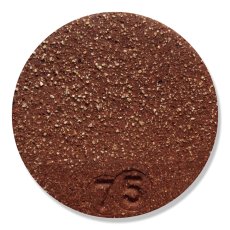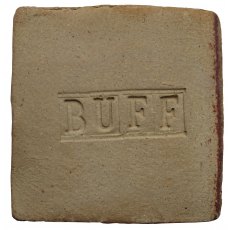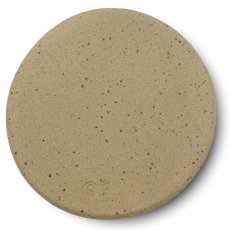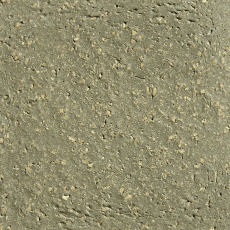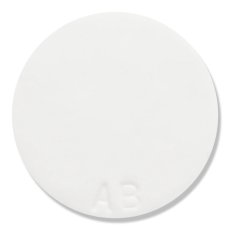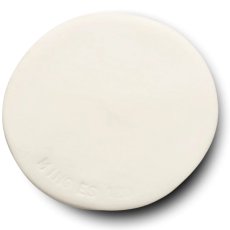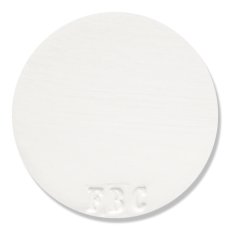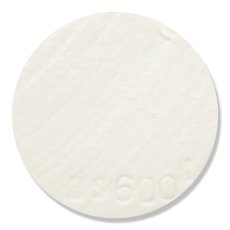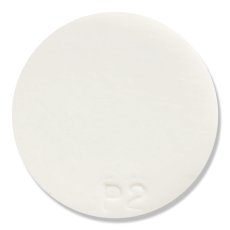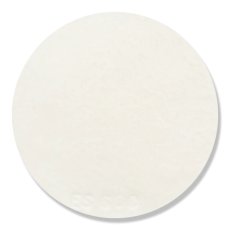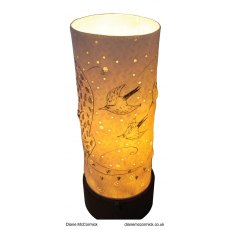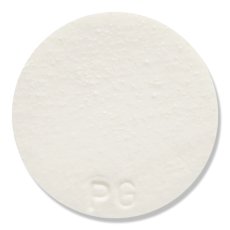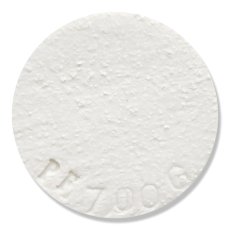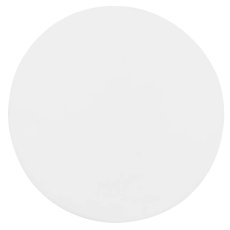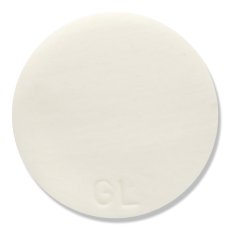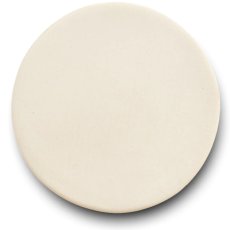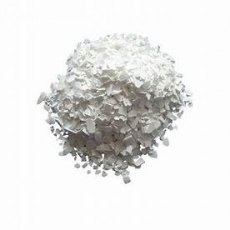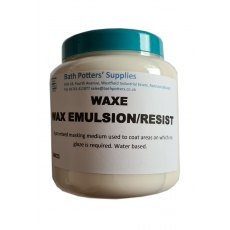Clays & Raw Materials: Page 4
Scarva Earthstone Terracotta Smooth Textured Crank E-S75

Firing Range: 1080°C-1220°C
ES75 Smooth Textured Terracotta Crank is prepared to the same high standards as ES65 Terracotta Crank but offers a closer texture and smoother surface. It will take surface detail well, can be used as a coarse throwing body and is excellent for slabbing, handbuilding and tiles. Superb crank body. Coarsely grogged. Tremendous plasticity. Excellent for creating...

from £3.00 inc VAT
Speckled Slate Stoneware Clay WMS2005GG
Firing Range: 1100°C-1250°C
Speckled Slate Stoneware is a grey body with speckles, excellent for handbuilding.
A note regarding fleck variation: The fleck size/density in our flecked bodies is variable from batch to batch due to the nature of the raw material supplied to us. The user must sample/batch test in their own application before proceeding. We cannot accept any liability for...
from £3.78 inc VAT
Textured Grey Stoneware Clay
Firing Range: 1000°C-1200°C
Speckled Slate Stoneware is a light grey body with a medium tetrued grog, excellent for handbuilding and large sculptures. It becomes darker the higher you fire it.
Texture: 5
Fired Colour: Grey
% Total Shrinkage at 1300°C: 4.9%
from £3.00 inc VAT
White Hand Building Clay K129
Firing Range: 1000°C-1280°C
Light coloured clay body with a fine texture light molochite, ideal for handbuilding projects and sculpture work. Takes on glazes well. A wide firing range also makes it suitable for raku firings.
Texture: 5
Fired Colour: Light Off White
% Total Shrinkage at 1200°C: 5
For more information on this clay, please follow this link: Technical Data
Light...
from £4.68 inc VAT
Calcium Borate Frit
A fritted substitute for colemanite (new formulation).
% ANALYSIS
CaO = 27.10
Al2O3 = 4.77
SiO2 = 17.68
B2O3 = 50.44
Firing Range 1030°C - 1180°C
from £24.91 inc VAT
Ferro Frit F3134
Manufactured by Ferro, this frit is intended for use as a lime and borate source in partially fritted glazes, lead bisilicate glazes and low cost hobby glazes cone 06-10.
Melting range approx. 790-870C.
from £13.56 inc VAT
High Alkaline Frit
The High Alkali frit will give beautiful crackle blues from copper oxide addition.
% ANALYSIS
K2O = 17.35
Na2O = 17.46
Al2O3 = 5.69
CaO = 5.32
SiO2 = 50.30
B2O3 = 3.88
Firing Range - 860°C - 1060°C
from £13.80 inc VAT
High Boron-Lime Ferro Frit F3124
% ANALYSIS
K2O = 0.68
Na2O = 6.46
CaO = 13.97
Al2O3 = 9.96
SiO2 = 55.11
B2O3 = 13.82
Firing Range 1000°C - 1150°C
from £13.39 inc VAT
High Soda Frit F3110
High Soda Frit F3110
A very low alumina frit which assists spectacular crystal growth in glazes. Featured in many American recipes.
Leadless.
Firing range 1000-1100C
from £7.54 inc VAT
Low Expansion Frit
Low Expansion Frit
Immense craze resistance and useful additive to glazes which craze. Milkiness in large amounts.
Leadless.
% ANALYSIS
Li2O = 0.10
CaO = 3.60
ZnO = 3.30
MgO = 2.40
Al2O3 = 8.20
SiO2 = 63.60
B2O3 = 17.80
Firing range 1020°C - 1150°C
from £14.74 inc VAT
Soft Borax Frit
Slightly alkaline and gives turquoise from copper addition.
Firing Range 900°C - 1050°C
Si-Ca-Na-B-K.
from £15.27 inc VAT
Standard Alkaline Frit
Supplied in powdered form.
A highly alkaline frit used as a basis for raku glazes. Produces intense alkaline colours when used with oxides which have a crazed appearance.
Firing Range 860-1060C
from £13.80 inc VAT
Standard Borax Frit
Supplied in powder form
The unleaded frit most commonly used in earthenware glazes.
STANDARD BORAX FRIT % ANALYSIS
K2O = 1.33
Na2O = 8.75
CaO = 15.22
MgO = 0.05
Al2O3 = 7.54
SiO2 = 48.34
B2O3 = 18.76
Firing Range 900°C - 1050°C
from £13.51 inc VAT
Calcium Chloride
Used as a flocculent (0.05% addition) or in conjunction with bentonite as a suspending agent for glazes.
Comes in pre-weighed crystal form. Add warm water to the top of pot and stir until dissolved.
Hazard Symbol: Irritant
from £4.75 inc VAT
Ceramic Sealer
Ceramic sealer is a liquid silicon dioxide which can be applied to all unglazed, stable, porous surfaces; bisque ware, vitrified ceramic ware, fired clay bodies (pit, smoke, saggar, barrel, naked raku) to create an invisible, protective barrier against moisture.
Can be either a brushed or sprayed on. Brushes can be washed with water.
It will burn of if fired.
It is non-toxic and non-hazardous....
from £12.00 inc VAT
High Fire Mender 2oz

Repair, Attach decorations, Repair broken pieces, Fix hairline cracks, Attach greenware to bisque or attach bisque to bisque; High Fire Magic Mender is for porcelain and stoneware and may be fired to high temperatures.
INSTRUCTIONS for using High- Fire Mender: • Mix 2 parts slip or clay to 1 part High-Fire • Do not wet the piece to be mended. • Fill the jar with any High-Fire slip...

£22.80 inc VAT
Indian Ink 25ml
Indian Ink 25ml
This is a superb dense black, waterproof, free flowing ink, used by architects, draughtsmen and artists as well as students. Permanent.
Can be use with crackle glazes.
£1.34 inc VAT
Liquid Brush Wax Emulsion Resist

Wax Resist (AKA Wax Emulsion) acts to repels glaze from the surface to which it is applied. As the kiln is fired the wax dissipates, leaving the surface beneath as it was prior to firing. It can be applied to unglazed greenware or bisque or it can be applied over previously applied, unfired color. It can be applied with a brush, sponge or spattered. Each method allows the artist to expand the options...

from £6.19 inc VAT
Magic Mender 4oz

Repair, Attach decorations, Repair broken pieces, Fix hairline cracks, Attach greenware to bisque or attach bisque to bisque; Magic Mender is for ceramic greenware and bisque for temperatures up to Cone 03.
4 oz. container.

£24.00 inc VAT
Mender 60ml
Ceramic cement for greenware and biscuit suitable for earthenware temperatures. Brush on edges and hold together while setting. Apply a further coat and allow to dry. Fettle and fire. 60ml pot
Fire to 1060degC
£4.51 inc VAT
Moulding Latex Resist (Dipping)

Moulding Latex is a fantastic material to use for prop making and creating flexible moulds. By using pre-vulcanised liquid latex, you can create strong and durable moulds for a wide range of casting materials.
Moulding latex, sometimes known as Liquid Latex, dries at room temperature and is excellent at creating flexible skin moulds for casting materials such as plasters, cements and waxes, as well...

from £12.46 inc VAT
Refractory Glue Adhesive
Used as an adhesive to stick ceramic fibre/paper to high temp bricks and metals.
£8.90 inc VAT

